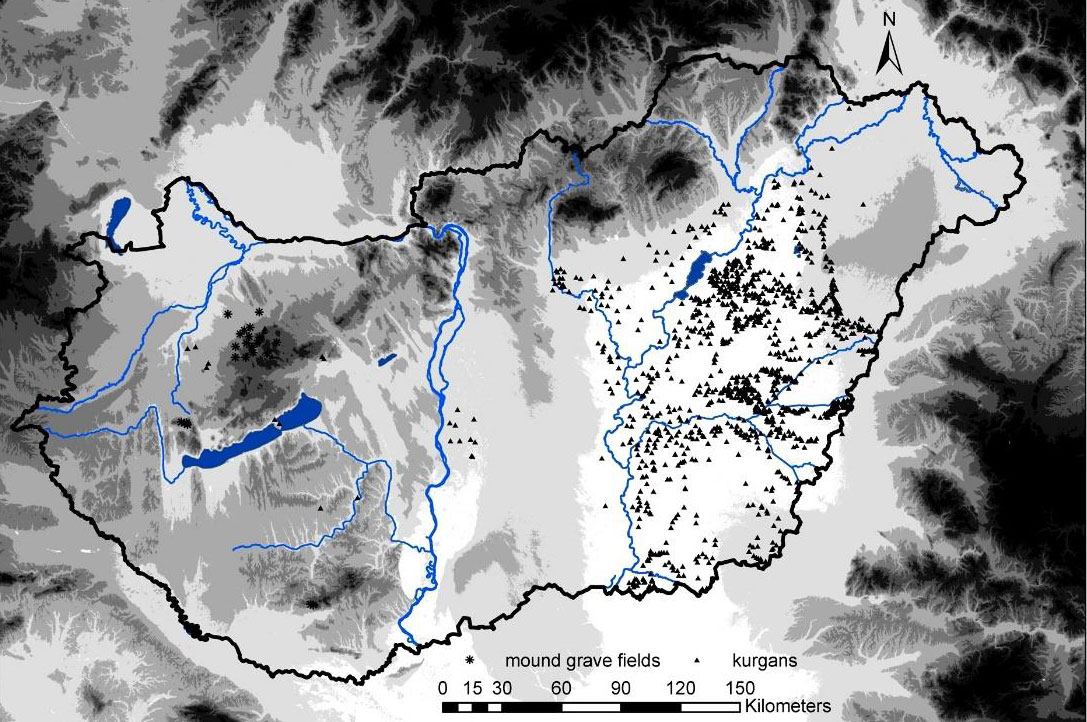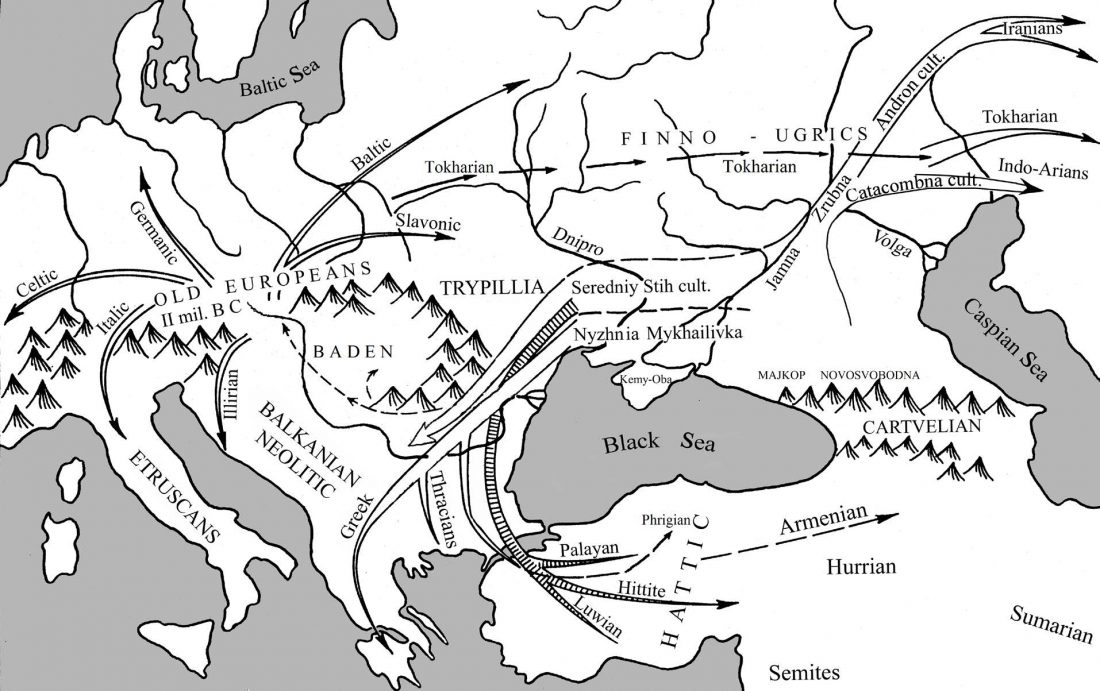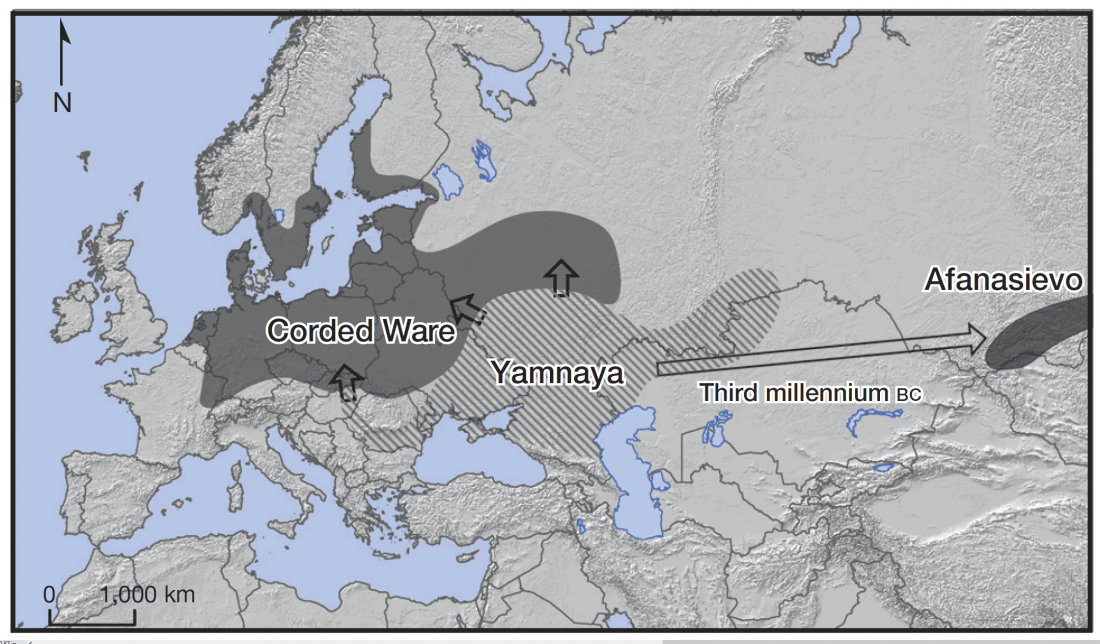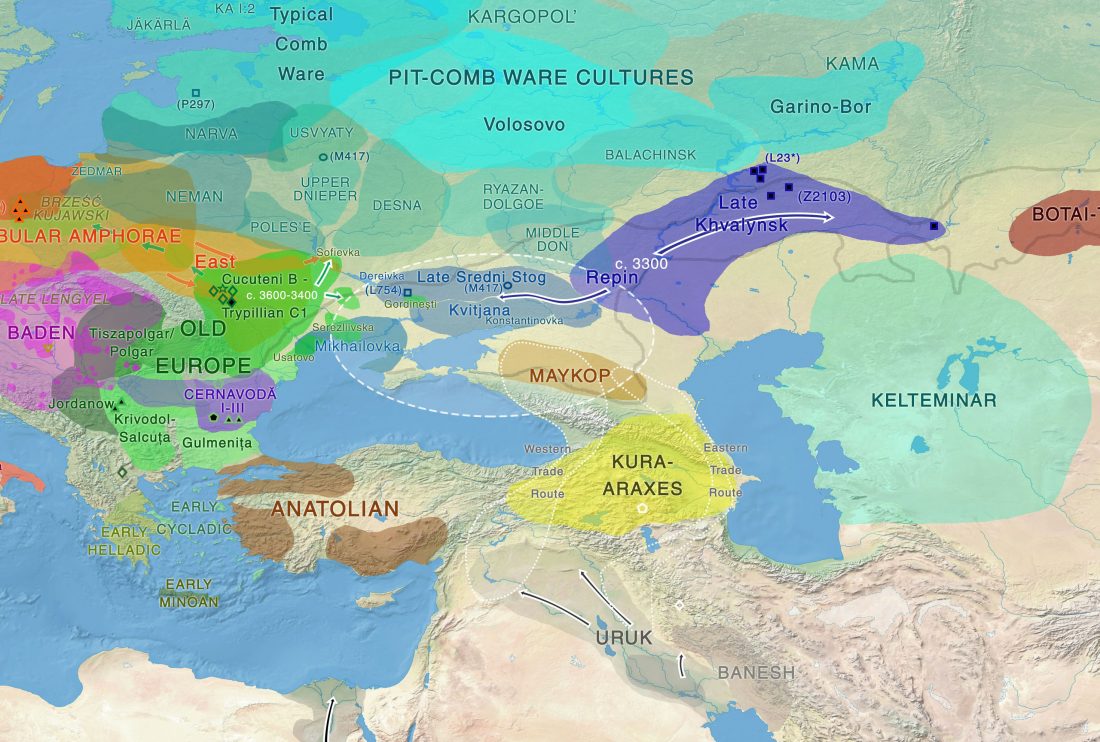I wrote recently about Anthony’s new model of Corded Ware culture expansion from Yamna settlements of Hungary. I am extremely sceptic about it in terms of current genetic finds, and suspicious of the real reasons behind it – probably misinterpretations of the so-called ‘Yamnaya ancestral component’ in recent genetic papers, rather than archaeological finds.
Nevertheless, it means a definitive rejection by Anthony of:
- The multiple patron-client relationships he proposed to justify a cultural diffusion of Late Indo-European dialects from Yamna into different Corded Ware cultures in the forest-steppe and Forest Zone (see one of his latest summaries of the







